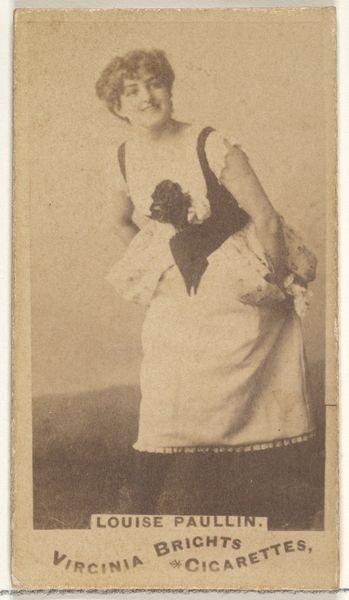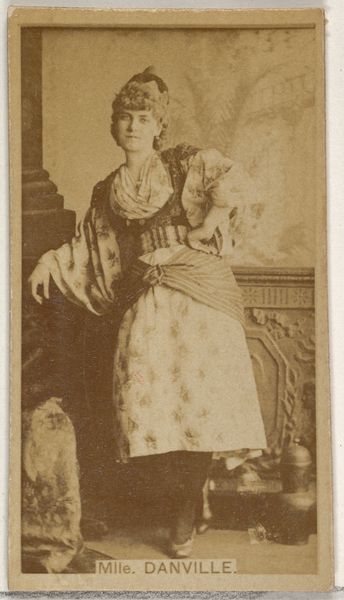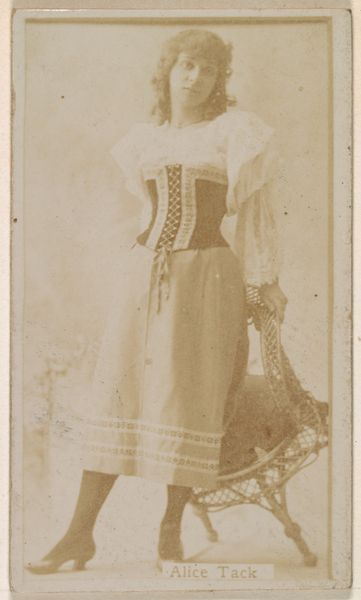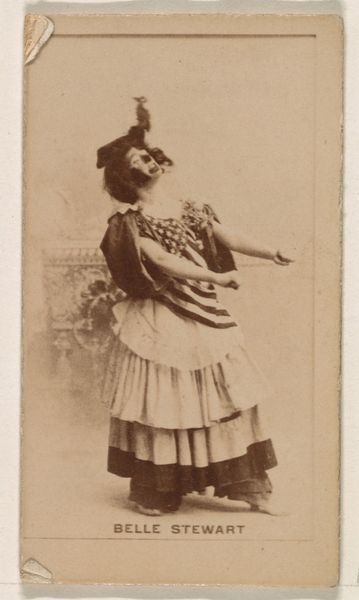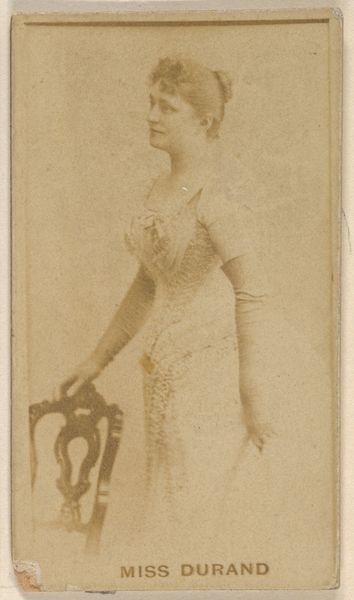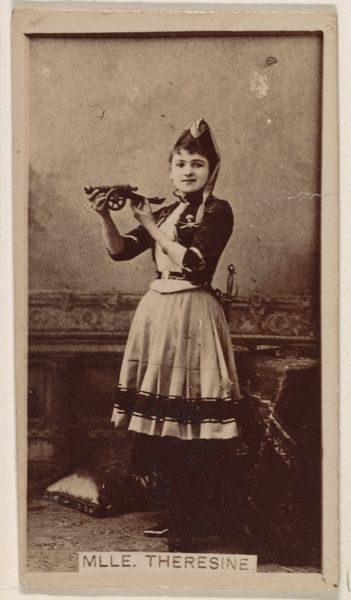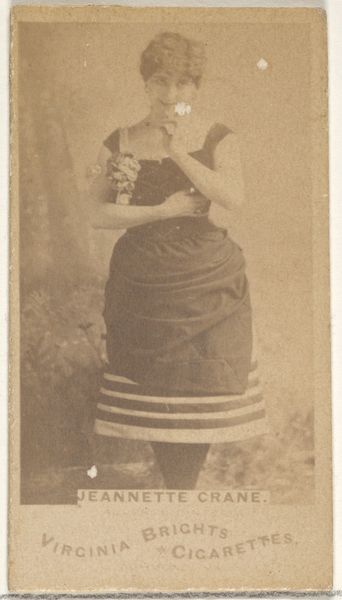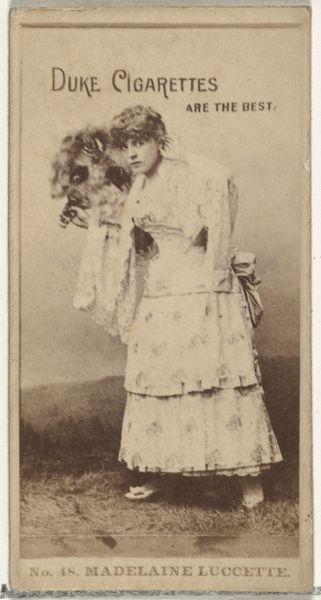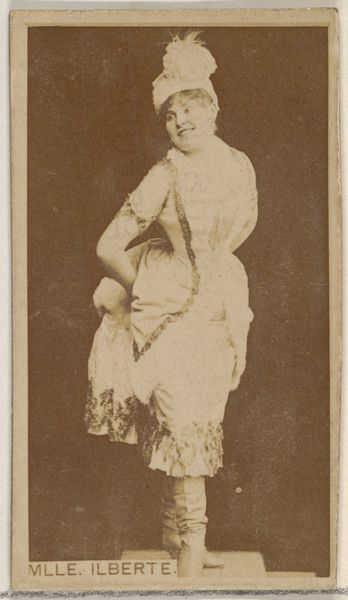
Maggie Cline, from the Actors and Actresses series (N145-8) issued by Duke Sons & Co. to promote Duke Cigarettes 1890 - 1895
0:00
0:00
print, photography
#
portrait
# print
#
photography
#
academic-art
Dimensions: Sheet: 2 11/16 × 1 3/8 in. (6.8 × 3.5 cm)
Copyright: Public Domain
Curator: Looking at this small but fascinating print titled "Maggie Cline, from the Actors and Actresses series," published between 1890 and 1895 by W. Duke, Sons & Co., what are your first impressions? Editor: There's a powerful warmth radiating from the photograph, which seems paradoxical, considering the rather severe and almost austere sepia tones used here. She feels immediately like someone you'd want to share a good, loud laugh with. Curator: Yes, the composition guides our interpretation. It’s an excellent example of Academic Art in portraiture, prioritizing clear lines and idealized form. Note the subject’s central placement, the balanced symmetry, and the even distribution of light—all working together to create an image of composed dignity. Editor: It's funny you say "composed" because that's exactly what it is: overly constructed, but undeniably vibrant at the same time! You can see her trying to remain contained within the visual field while simultaneously breaking free of its constraints, especially through her engaging facial expression. I mean, look at those mischievous eyes! She clearly had some backstage stories to tell. Curator: The materials themselves, humble photography reproduced as a mass-produced print, speak to a broader cultural context. This was originally a cigarette card meant to promote Duke Cigarettes. It also signals the rising celebrity culture of the late 19th century. What we see as art was originally ephemera, now given a new life in the museum, framed by the language of aesthetics. Editor: So, in essence, it’s less about eternal artistic value, but a commercial object resurrected, wouldn't you say? Perhaps Maggie, who once sang powerfully on the stage, winks at us from the other side, celebrating this wonderfully absurd second act. Curator: Precisely. Viewing this piece allows us to examine how photography, commerce, and popular culture can intersect. We discover narratives in material culture. Editor: I agree completely, an image can encapsulate not only a life, but an era, transformed by context, and, now, the museum.
Comments
No comments
Be the first to comment and join the conversation on the ultimate creative platform.

